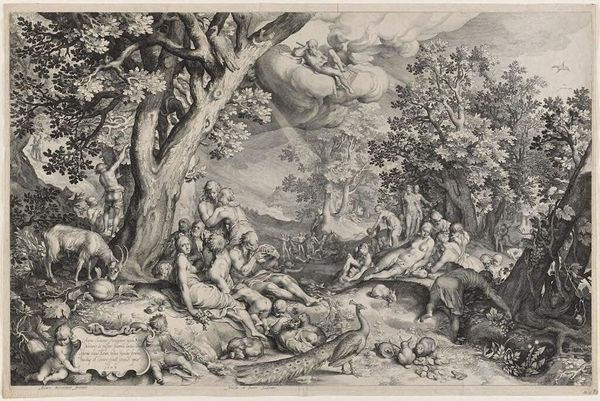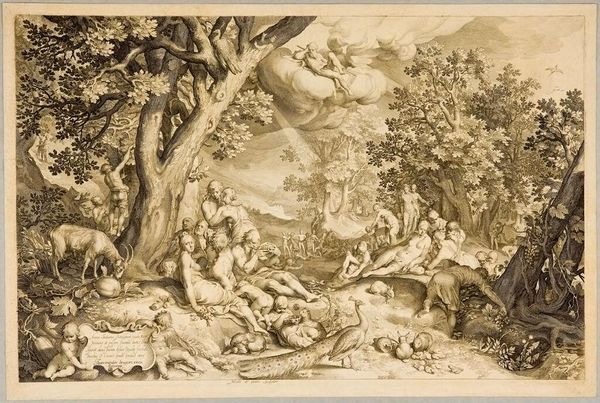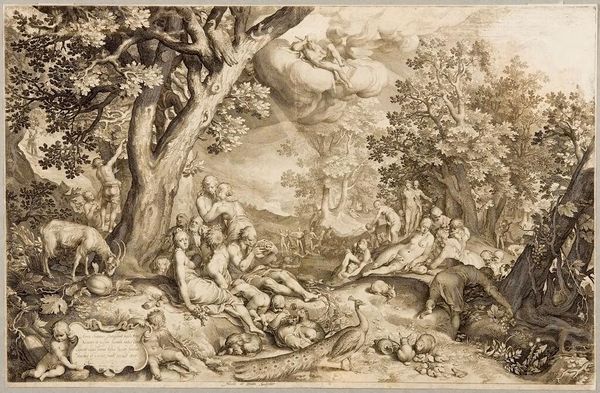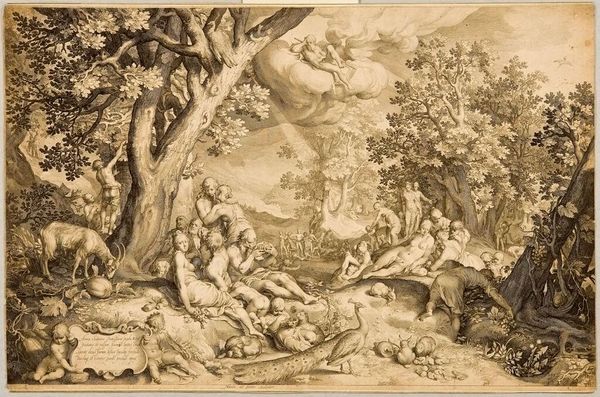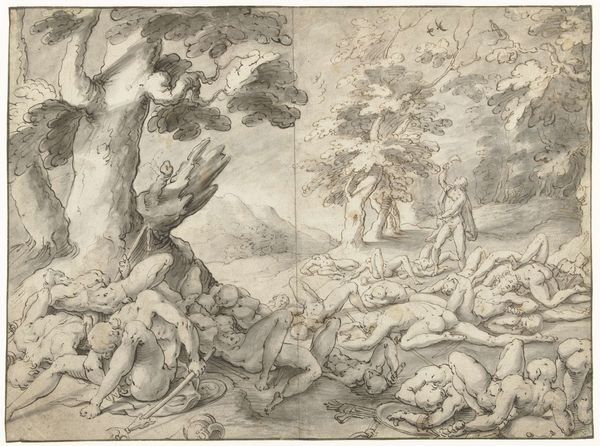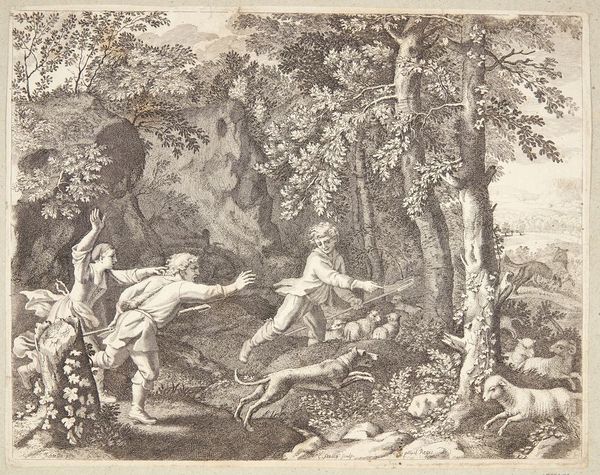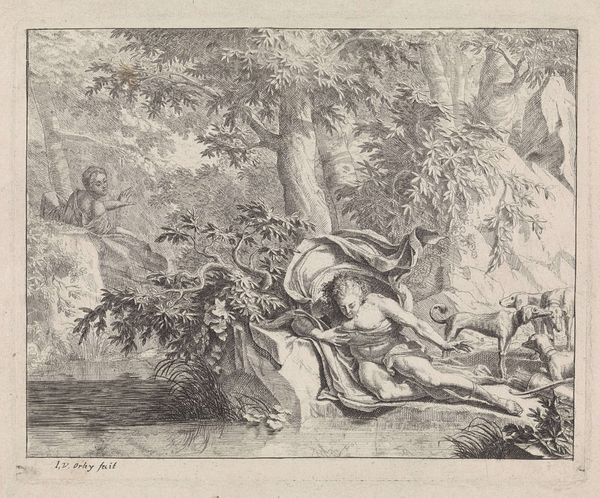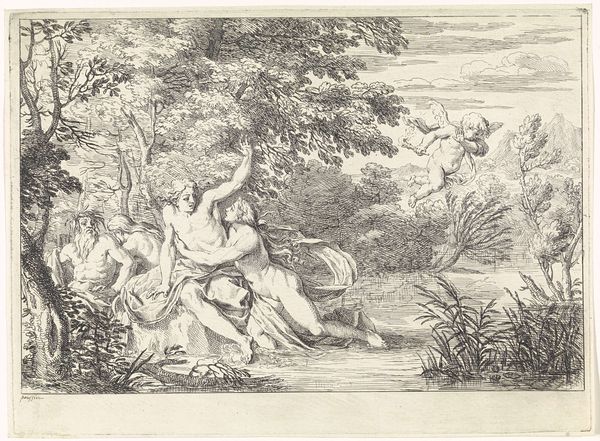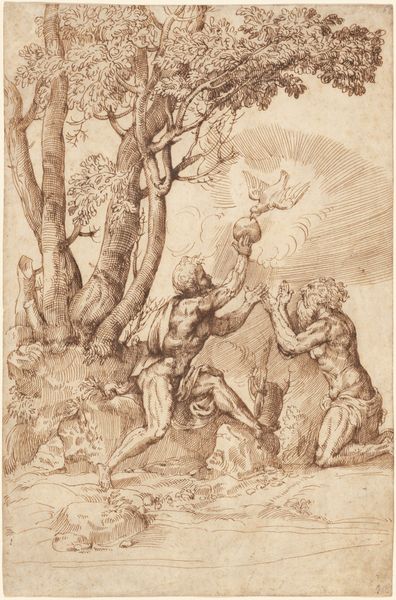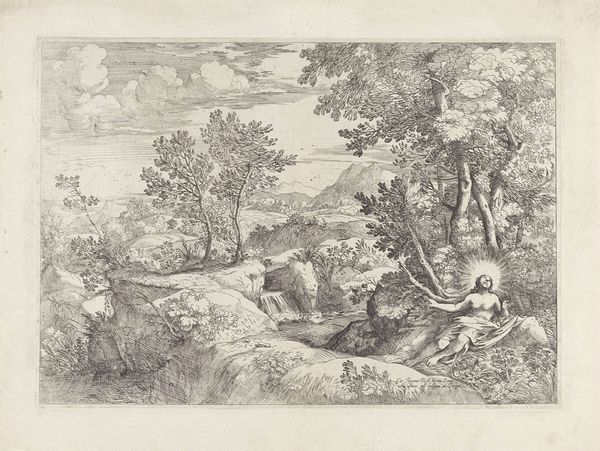
print, engraving
#
baroque
# print
#
pen sketch
#
pencil sketch
#
landscape
#
figuration
#
11_renaissance
#
pencil drawing
#
pen-ink sketch
#
pen work
#
pencil work
#
history-painting
#
engraving
#
pencil art
Dimensions: 688 mm, height 444 mm
Copyright: Rijks Museum: Open Domain
Nicolaes de Bruyn made this print, ‘Gouden Eeuw’, or ‘Golden Age’, sometime in the early 17th century. It is made using the technique of engraving, where lines are cut directly into a metal plate, allowing for the creation of multiple impressions. What I find compelling about engravings like this is the intense labor that goes into their making. Look closely, and you’ll see that the whole image is constructed from thousands of tiny, precise marks. This wasn’t just a question of artistic vision. It was a skilled tradition, passed down through workshops. De Bruyn would have trained for years to master the tools and techniques necessary to produce such a detailed image. The very concept of the “Golden Age” reflects social conditions. It’s a mythical vision of leisure and abundance, made to appeal to a wealthy class of consumers. Remember, prints like these were luxury goods, collected and displayed as signs of wealth and status. The image is not just about the fantasy of an easier life, but also about the amount of work required to produce luxury goods and a culture of collecting and display.
Comments
No comments
Be the first to comment and join the conversation on the ultimate creative platform.
